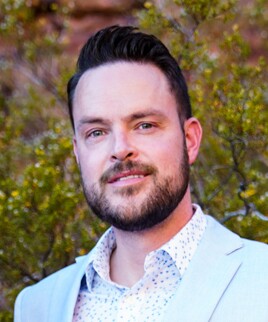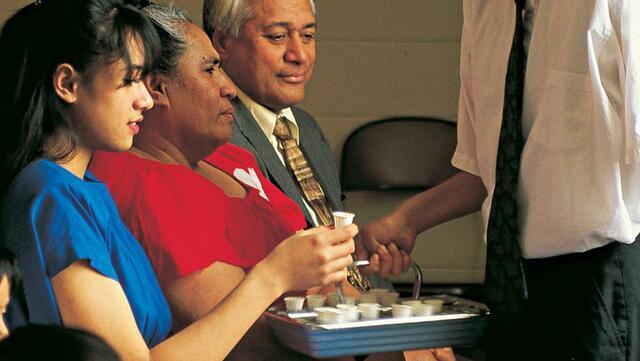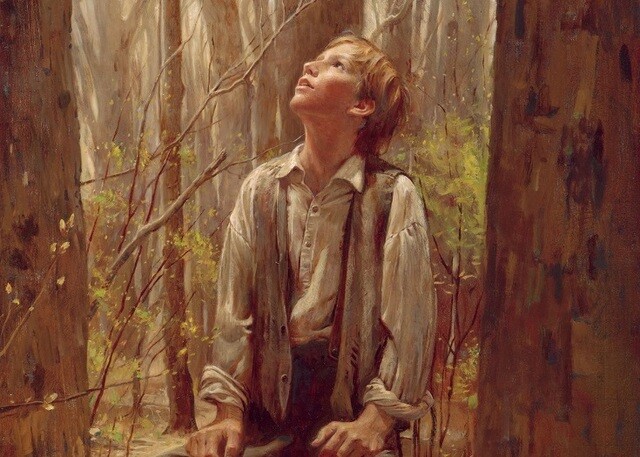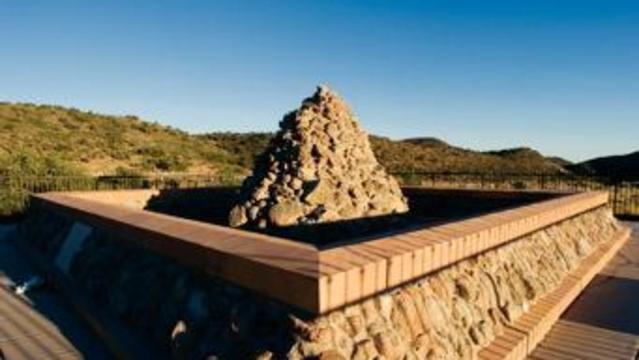Editor's note: This article is part of a series on what the Church has actually taught about various topics. To read more about the Church’s teachings on cremation, garments, beards, and more, click here.
For Latter-day Saints, the beard debate has continued for decades, but aside from missionary standards and the BYU beard policy, little has been officially said about the topic.
While people are divided on the subject today, beards were widely accepted and even encouraged during the early 1900s. Missionaries in the British and European missions were even required to grow beards during their missionary service at one point because “facial hair added dignity.”
Many prophets and apostles also sported long beards during their service in the Church. Brigham Young, Heber J. Grant, and Joseph F. Smith were just a few of the influential prophets who had facial hair, but things started to change in the 1960s when beards shifted from a sign of dignity to a sign of rebellion. The last prophet to have facial hair was George Albert Smith in 1951. David O. McKay became the first clean-shaven prophet (with the exception of Joseph Smith), and the standard has remained for every prophet since.
► You may also like: What the Church has actually said about caffeine
President Dallin H. Oaks addressed the BYU student body when he was first appointed as the university’s president. Among other topics, he talked with the students about appearance—specifically facial hair.
“I am weary of having young people tell me how most of our Church leaders in earlier times wore beards and long hair, which shows that these are not inherently evil,” President Oaks said in 1971.
“In the minds of most people at this time, the beard and long hair are associated with protest, revolution, and rebellion against authority. They are also symbols of the hippie and drug culture. … In addition, unkemptness—which is often (though not always) associated with beards and long hair—is a mark of indifference toward the best in life.”
President Oaks noted that he wouldn’t be surprised if the beard policy changed in the future. The address was given more than 40 years ago, and the policy at BYU has become slightly more lenient—allowing beards for medical, theatrical, or religious purposes.
Missionaries are also required to be clean-shaven, and the missionary grooming guidelines emphasize the importance of keeping a “professional, dignified, clean, and well-groomed appearance” to keep all attention on the message the missionary is called to share. In addition, many temple workers and ward, stake, and other Church leaders remain clean-shaven. But is this a requirement? And what about the rest of the Latter-day Saint community?
What the Church Has Actually Said
The Church’s handbook and Newsroom do not provide any specific guidelines regarding beards or facial hair. Even on ChurchofJesusChrist.org, the topic is limited to a Bible Dictionary description, two scriptures under the topical guide section “beard,” and a few articles or talks addressing beards and facial hair.
In the February 1993 Ensign, David S. King, president of the Washington temple, addressed the questions “Is there a dress and grooming standard for temple attendance?” In this article, he said:
“Church leaders, recognizing that fashions go in cycles, are sensitive to the rich cultural diversity within the Church. For example, they have recently held that clean, neatly trimmed and managed beards and long hair for men—as well as certain other fashions that to some might seem ‘trendy’—are acceptable for the temple, provided they are not inherently offensive or vulgar. In the tropics, certain attire that in the northern climes may be considered extreme is not only acceptable but mandatory. Proper allowances must be made for these differences. …
“Having reached this conclusion, however, we still face the unanswered question of what to do with temple patrons who reach the temple inappropriately attired. Suppose the members of a righteous family, having traveled a long distance at considerable expense, arrive at the temple to receive their own endowments and sealings but are informed that they are inappropriately dressed. Are they to be turned away, as the Zoramites, who were cast out of the synagogues because of their coarse apparel? (See Alma 32:2.) Should their failure (perhaps the result of misinformation or other human errors) to meet the temple’s standards of dress deprive them of their eternal blessings? Of course not.
“After carefully considering this very question, Church leaders have announced a ruling that preserves the need of an expanding church to both respect temple standards and accommodate itself to the demands of Christian love and understanding. The rule holds that the responsibility for teaching temple patrons about dress and grooming standards must rest upon the priesthood authorities who issue temple recommends. It is at the family, ward, and stake level, not at the temple, that the proper foundation for temple conduct and dress must be laid” (emphasis added).
As a global Church that encompasses a host of cultures, Church leaders have not issued any Churchwide policies based on facial hair, which holds different meanings in different places around the world. Because of this, the Church has left it up to local Church leaders to decide grooming standards for temple attendance, leadership, and temple workers. Some Church leaders may ask newly called bishops, stake presidents, temple workers, or patrons to remain clean-shaven. Similarly, the Church has left it up to each individual to determine if they will grow facial hair or not.
What the Scriptures Say about Beards
The scriptures themselves contain a limited number of references to beards, but each illustrates important principles. Here are a few:
“Ye shall not round the corners of your heads, neither shalt thou mar the corners of thy beard.” —Lev 19:27
“That there came certain from Shechem, from Shiloh, and from Samaria, even fourscore men, having their beards shaven, and their clothes rent, and having cut themselves, with offerings and incense in their hand, to bring them to the house of the Lord.” —Jeremiah 41:5
“Wherefore Hanun took David’s servants, and shaved off the one half of their beards, and cut off their garments in the middle, even to their buttocks, and sent them away.” —Samuel 10:4
“But it shall be on the seventh day, that he shall shave all his hair off his head and his beard and his eyebrows, even all his hair he shall shave off: and he shall wash his clothes, also he shall wash his flesh in water, and he shall be clean.” —Lev. 14:9
These scriptures reflect that beards held meaning and significance even in ancient cultures, but that meaning could change depending on time, place, and circumstance.
According to the Bible dictionary, Jews understood beards as having "great importance," and facial hair distinguished them from the Egyptians, who remained clean-shaven. While beards set the Jews apart, the way a person wore their beard could point to their faithfulness. In the Bible dictionary, it clarifies that "trimming the corners of the mouth," forbidden in Leviticus 19, was a mark of idolatry.
Later in the scriptures, as can be seen in the scriptures in Jeremiah and Samuel, shaving one's beard is seen as an act of humility or humiliation. Another mention of beards in Leviticus 14 mentions that the shaving of all of one's facial hair was part of a ritual cleansing for lepers.
As we can see from these few examples, beards or the cutting of a beard can signify everything from purity to humility and faithfulness to idolatry. Today, beards also carry meaning that can vary based on culture and time. Just as missionaries used to grow beards to signify dignity, today they show respect and keep attention focused on their message by remaining clean-shaven.
The most important lesson we can learn from these scriptures is that what matters most is the spirit with which one presents themselves and their appearance before God. Our dress, grooming, and appearance should reflect our love of God and our willingness to follow Him—beard or no beard.
As For the Strength of Youth illustrates, "Your body is sacred. Respect it and do not defile it in any way. Through your dress and appearance, you can show that you know how precious your body is. You can show that you are a disciple of Jesus Christ and that you love Him."




















